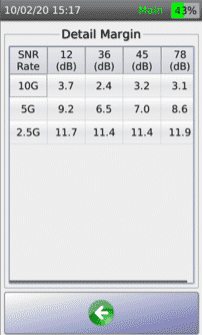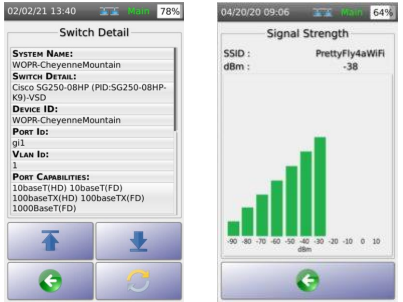Pre-commissioning Cable Tests Create New Revenue Streams
Nobody likes leaving money on the table – especially when it’s right within reach. Unfortunately,...

It hasn’t been easy to acquire enterprise networking gear as of late. Semiconductor shortages combined with global shipping constraints have delayed many enterprise IT projects including Wi-Fi upgrades. The good news, however, is the bottlenecks are finally clearing. As these network vendor supply chain woes begin to ease, businesses are finally beginning to receive shipments of Wi-Fi 6 and 6E access point (AP) hardware that have been on backorder for months.
Now that Wi-Fi 6 and 6E equipment is being delivered to customers, these organizations are now reaching out to installers to assist with swapping out their aging Wi-Fi APs. As a professional installation expert, it would be wise to recommend the business perform a cable plant audit to better ensure that the new Wi-Fi equipment will operate reliably and optimally across the entire network. Let’s learn about some of those cabling concerns and how to run critical performance verification tests.
Throughput:
A single Wi-Fi 6 or 6E AP is capable of maximum wireless throughput that far surpasses 1Gbps. Previous Wi-Fi standards were below this 1Gbps threshold. Thus, it made perfect sense to connect APs via standard 1Gbps Ethernet links and Cat 5e cabling. When upgrading to newer Wi-Fi 6 and 6E technologies, however, standard 1Gbps connectivity won’t cut it. Not only does this mean that network switches must be upgraded to support 2.5 and 5 Gbps multi-gigabit Ethernet, the cabling between the switch and Wi-Fi AP must be tested and potentially upgraded if test results show that the cabling is not capable of operating reliably at higher throughput rates.
To make certain that cabling can operate at multi-gigabit speeds, a qualification test can be performed using the TestPro or Network Service Assistant (NSA). As shown in our example output below, simple pass/fail results will be presented in seconds and this information will help confirm that cabling can indeed run at much higher throughput rates.

Multi-Gigabit Qualification test result
Also note that Wi-Fi 6 and 6E access points can support larger numbers of simultaneously connected devices. This is incredibly useful in 2022 as the number of Wi-Fi connected IoT and IIoT devices deployed throughout an enterprise is on the rise. Keep in mind that when device counts increase, so too does the overall throughput required to support those devices. Looking beyond the throughput required on a per-AP basis, switch uplinks and associated copper and fiber cabling must be reviewed and potentially upgraded to support more and more traffic traversing a corporate network.
The good news is that the AEM TestPro and NSA use a modular design. This means that the same device can run cable tests for twisted-pair copper, and singlemode/multimode fiber with a wide variety of swappable fiber connector types. The following example shows test results from a multimode and single mode fiber test module:

Singlemode and multimode fiber test capabilities
Power delivery:
When deploying wireless access points throughout a building, plant or campus, most choose to deliver power to the remote AP by way of power over Ethernet (PoE). The problem is that new Wi-Fi 6 and 6E AP hardware requires more PoE wattage compared to previous iterations. Thus, careful planning must be made to ensure that the power supply equipment (PSE) can deliver the higher level of Wattage and that the cabling can successfully transport that power to the other end without significant power loss. PSE equipment usually comes in the form of a PoE-capable network switch, midspan device or individual power injector. This is a relatively straightforward process as the AP equipment will provide details into the Wattage level required. This number must then be referenced against the PSE’s maximum per-port output capability. If the PSE cannot handle the wattage increase, it must be upgraded.
Of course, cable tests must also be performed on existing cabling. This is to verify that the twisted-pair copper (and applicable cable standard) can handle the increase in power delivery requirements. With the right test tools this becomes a straightforward process. The following example shows TestPro/NSA PoE verification test results including a real-time load test that calculates the real power received at the remote end of the cable run:

PoE validation with load test results
It’s also important to note that increased power delivery can cause internal and external cable interference. Because of this, additional tests – such as a signal-to-noise ratio (SNR) test -- should be run to verify that the increased power now traversing the twisted pair copper cable plant is not creating additional interference (noise) to the point where it begins drowning out data transmit and receive signals. The following example shows SNR readings across twisted-pair copper at various multi-gigabit rates:

Multi-gig SNR test
Pre and post-install verification tests:
Once cabling is installed and performance/PoE tests are run to validate operability, both wired and wireless connectivity must be verified to establish that access points are connected to the correct switch/port/VLAN and that Wi-Fi devices can connect and transmit data on the newly deployed APs. Both the TestPro and NSA include a variety of network verification and troubleshooting tools that are useful in these instances. The first screen capture highlights how an AEM test tool can be plugged into the wired side of the network to confirm switch detail information including switch name, make/model, port and VLAN. In the second screen capture, we show how the same tester can connect to the Wi-Fi network to quickly verify that SSID’s are accurately being broadcasted along with signal strength readings in real-time:

Wired switch detail and Wi-Fi signal strength verification screens
A few extra tests go a long way
To lessen the risk that existing cabling will impact network performance of an upcoming Wi-Fi 6 or 6E upgrade, a handful of tests like the ones presented should be run. This eliminates any unknowns about the cabling and will better guarantee that the upgrade will be successful.
Ready to learn more about how AEM's award-winning test solutions can help you achieve your cable testing needs? Request a demo with our team.

Nobody likes leaving money on the table – especially when it’s right within reach. Unfortunately,...

Part 3 of a 3-part Series This is part 3 of a 3-part series. To view the previous 2 parts, click...
-1.png)
Part 2 of a 3-part Series This is part 2 of a 3-part series. To view Part 1, Common Data Center...
Leave a comment